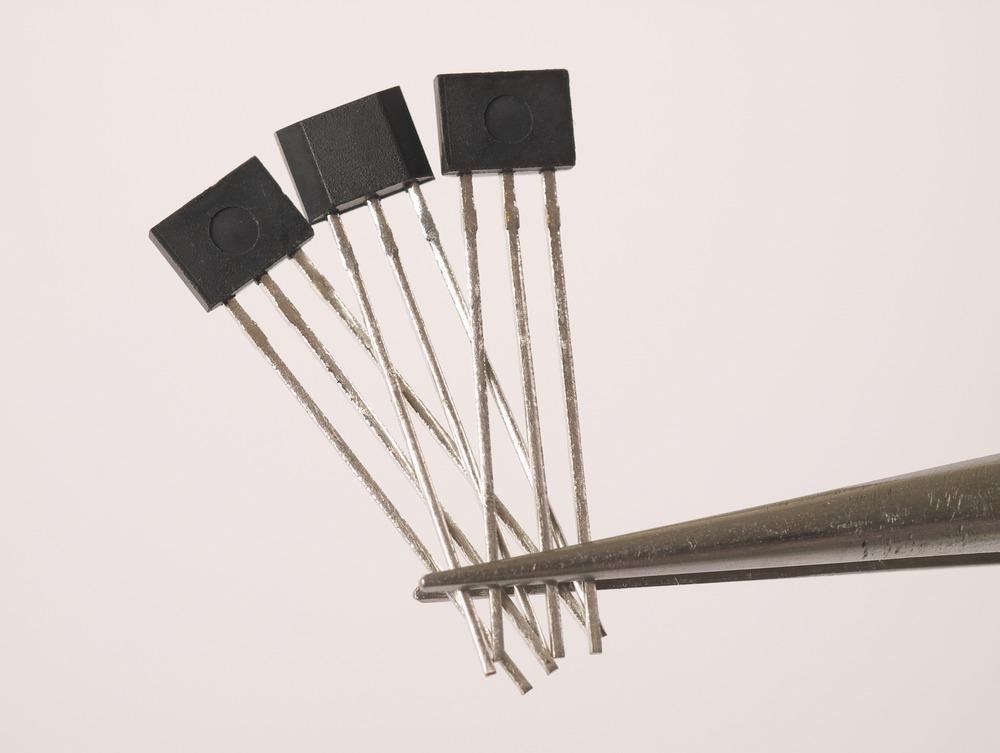Hall effect sensor devices are magnetic field sensors that are widely used in electronic applications. Graphene's excellent electronic and mechanical properties make it an ideal material for high-performance and flexible Hall effect sensor devices.

Image Credit: Kirill Volkov/Shutterstock.com
This article provides an in-depth overview of the significance and recent advancements of graphene in Hall effect sensor application.
How Do Hall Effect Sensors Work?
Hall effect sensors are advantageous for various magnetic field sensing applications, including precise voltage and current sensing, robotic position detection, and fundamental studies of magnetism and superconductivity.
The Hall effect is based on the principle that a transverse voltage produced by current flowing along the length of the conductor is directly proportional to the magnetic field perpendicular to it. Because of their simple linear magnetic field response, Hall effect sensors have become one of the most widely used sensors in the past few decades.
However, under high magnetic fields and at very low temperatures, the electrical resistance is quantized when electrons travel in a 2D electron gas system (2DEG). As the magnetic field increases, the Hall resistivity changes in a staircase sequence rather than a monotonic increase as in the case of a conductor, an effect known as the ‘Quantum Hall Effect (QHE)’.
What is Hall Effect and How Hall Effect Sensors Work
Video Credit: How To Mechatronics/YouTube.com
Using Graphene in Hall Effect Sensing Applications
One of the key parameters for Hall effect sensors is sensitivity, which is dependent on high charge carrier mobility and low sheet carrier density. Graphene offers very high carrier mobility at room temperature (2,00,000 cm2/Vs), resulting in low electronic noise and its low sheet carrier density leads to exceptionally high magnetic sensitivity. Hence, graphene is considered the perfect material for Hall effect sensors.
Until silicon CMOS technology, QHE has been observed only at liquid-helium temperatures. However, 2007 reports on the measurement of QHE reliably even at room temperature in single layer graphene opened up a new dimension to operating Hall effect sensors in a large magnetic field range with high magnetic sensitivity.
Innovations in Graphene Hall Effect Sensors
Researchers from RWTH Aachen University used single-layer graphene to fabricate ultra-sensitive Hall effect sensors. They used hexagonal boron nitride layers to encase graphene and demonstrated current sensitivity of up to 5700 V/AT. These values are more than a factor of two higher than those obtained in ambient conditions with the best III/V semiconductor Hall effect sensors.
Another study led by Cornell University researchers created a tiny Hall effect sensor (width 1 µm) using ultrathin graphene and hexagonal boron nitride to detect minute changes in magnetic fields that would otherwise be lost in larger magnetic fields surroundings. They calculated a detection limit of 700 nT Hz-1/2 at 1 kHz at room temperature.
A breakthrough result on graphene Hall effect sensors was reported by a collaboration between the German company Bosch and scientists at the Max-Planck Institute. The sensitivity of a traditional silicon sensor is 70 V/AT, whereas their graphene Hall effect sensor has a sensitivity of 7,000 V/AT, which is 100 times more sensitive than an equivalent silicon device.
The Commercialization of Graphene Hall Effect Sensors
The principal challenges in developing graphene-based Hall effect sensors are decreased electrical conductance during the transfer process and the scalability for commercialization. In previous attempts, the problem lay in removing graphene from the substrate it was grown on and transferring it onto a substrate of choice without introducing defects that would severely degrade its performance.
Recently scientists from UK-based graphene developer company Paragraf claimed to have cracked the key to scalability by growing the graphene directly onto a semiconductor wafer which enables the growth of high purity graphene, with high carrier mobility.
ParagrafTM: Industrial Scale Graphene Hall Effect Sensors
Paragraf is the leading company working on the volume production of graphene-based hall-effect sensors. Recently, Paragraf has introduced the GHS-C Cryogenic Graphene Hall Effect Sensor, which enables the measurement of magnetic field strengths of up to seven Tesla (T) at temperatures below three Kelvin (K). This is especially important when dealing with cryogenic applications, such as quantum computing.
Another graphene-based product, GHS01AT Hall Effect, is suitable for battery applications, such as the electric vehicle for battery cell analysis to protect against the risk of thermal runaway. These sensors are now in mass production and are being supplied in the industry-standard LCC 20 packages.
Next-Generation Hall Effect Sensors Using Graphene
Currently, silicon CMOS-based Hall effect sensors are used in most applications due to their low manufacturing costs. However, recent advances in the mass production of high-quality graphene will enable the incorporation of graphene Hall effect sensors in several emerging application areas, including wearable electronics, biomedicine, electronic skin, robotics, and prosthesis, over the next few years.
Paragraf has already indicated that its graphene Hall effect sensors can withstand high concentrations of radiation in space. Hence, graphene Hall sensors will be used in high-radiation environments such as nuclear power plants and satellites in the coming few years.
References and Further Reading
Novoselov, K., et al. (2007). Room-temperature quantum Hall effect in graphene. Science, 315(5817), p.1379. https://doi.org/10.1126/science.1137201
Dauber, J., et al. (2015). Ultra-sensitive Hall sensors based on graphene encapsulated in hexagonal boron nitride. Applied Physics Letters, 106(19), p.193501. https://doi.org/10.1063/1.4919897
Schaefer, B. T., et al. (2020). Magnetic field detection limits for ultraclean graphene Hall sensors. Nature Communications, 11(1), p.1-8. https://www.nature.com/articles/s41467-020-18007-5
Collomb, D., (2021). Frontiers of graphene-based Hall-effect sensors. Journal of Physics: Condensed Matter. 33(24), p.243002 https://iopscience.iop.org/article/10.1088/1361-648X/abf7e2
ParagrafTM (2020) Graphene Hall Sensors. [online] https://www.paragraf.com/ Available at https://www.paragraf.com/graphene-electronics/ghs/
Disclaimer: The views expressed here are those of the author expressed in their private capacity and do not necessarily represent the views of AZoM.com Limited T/A AZoNetwork the owner and operator of this website. This disclaimer forms part of the Terms and conditions of use of this website.